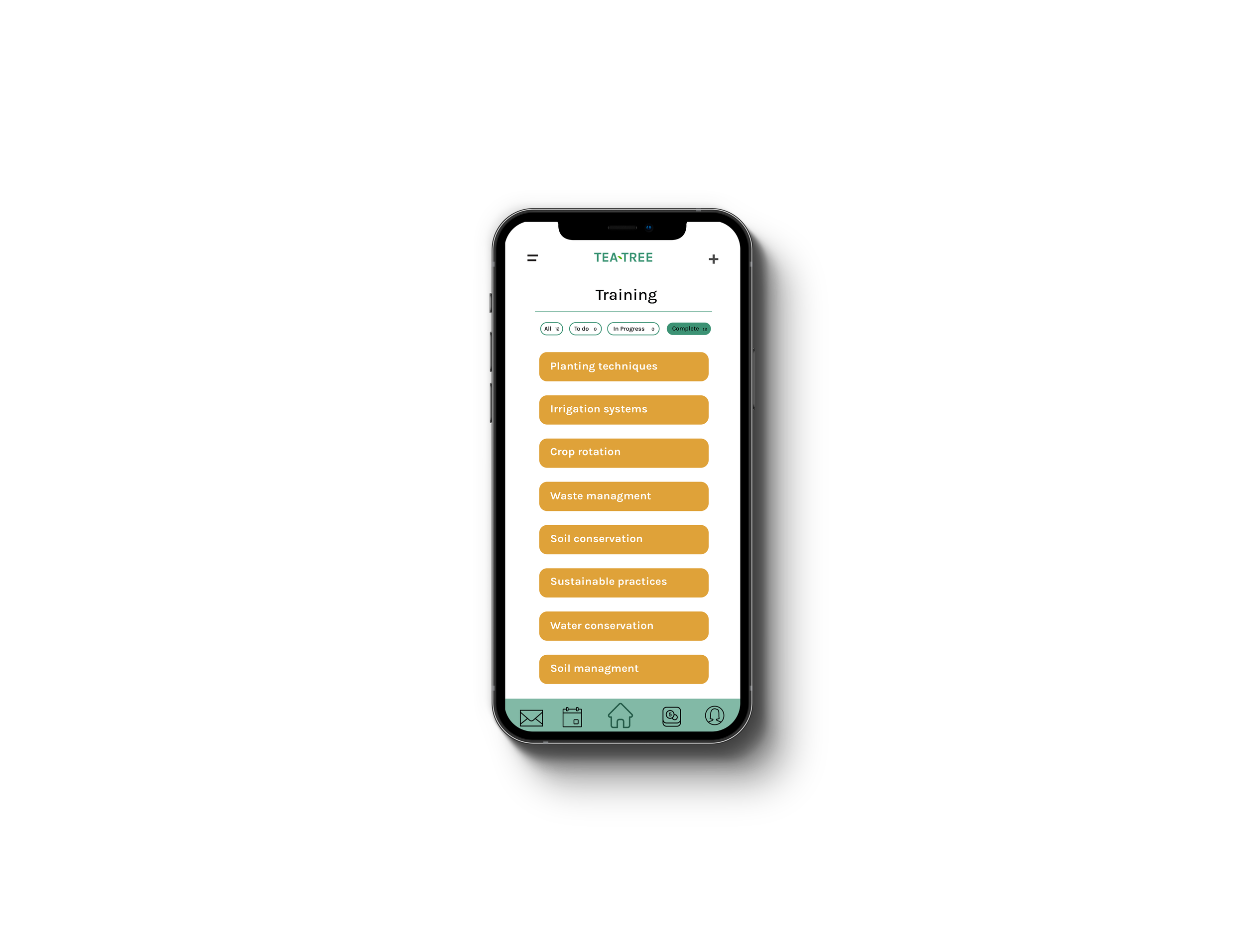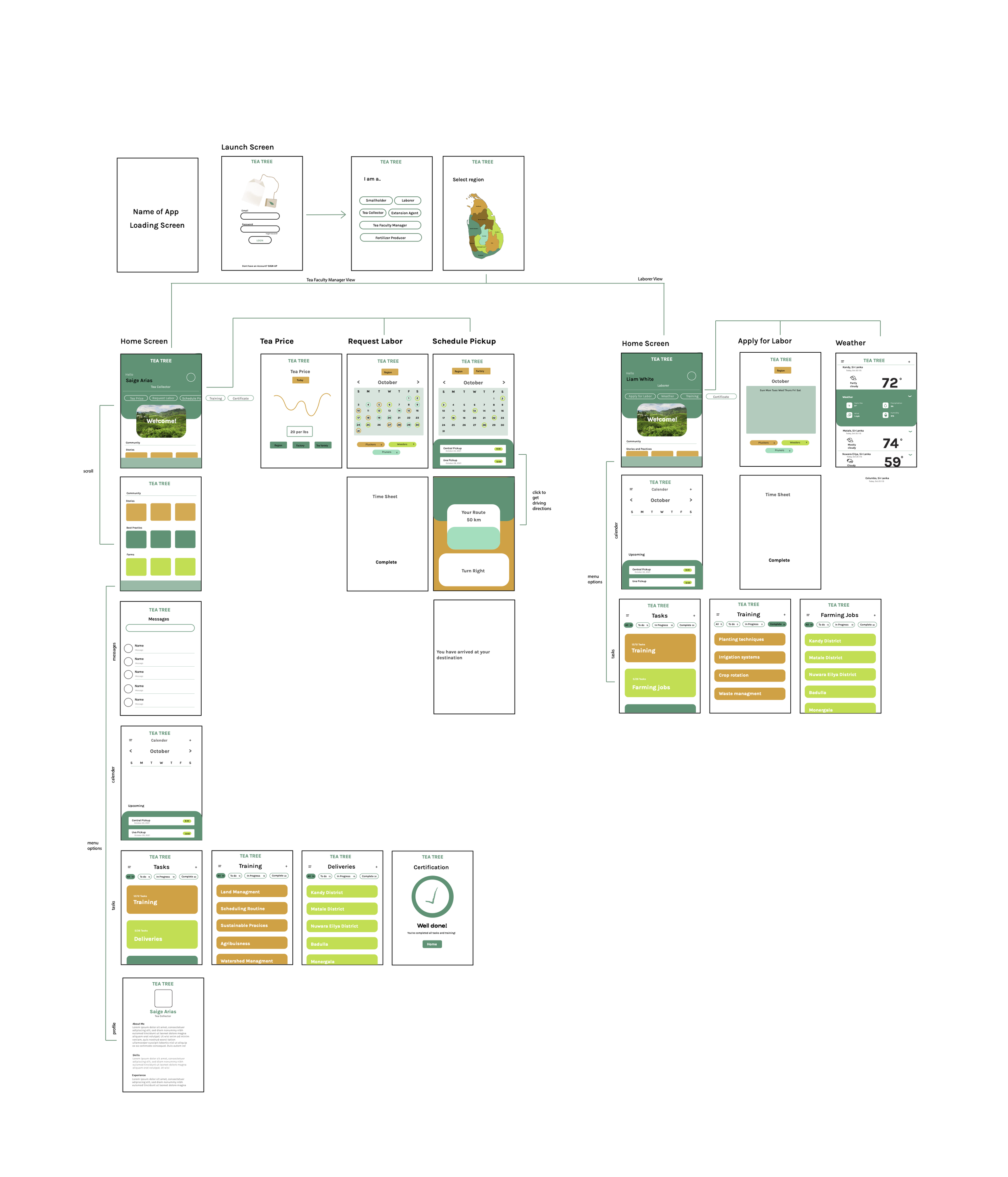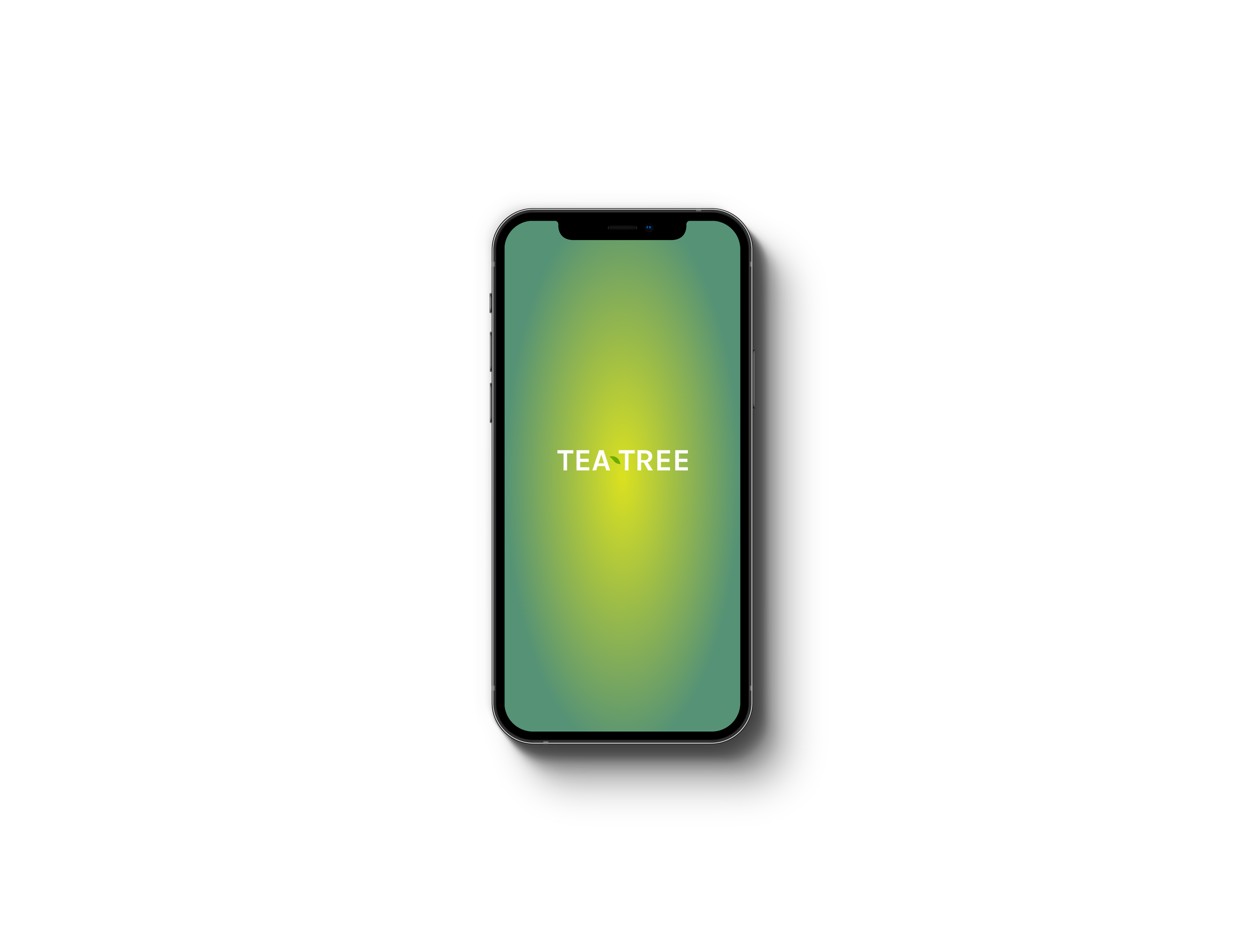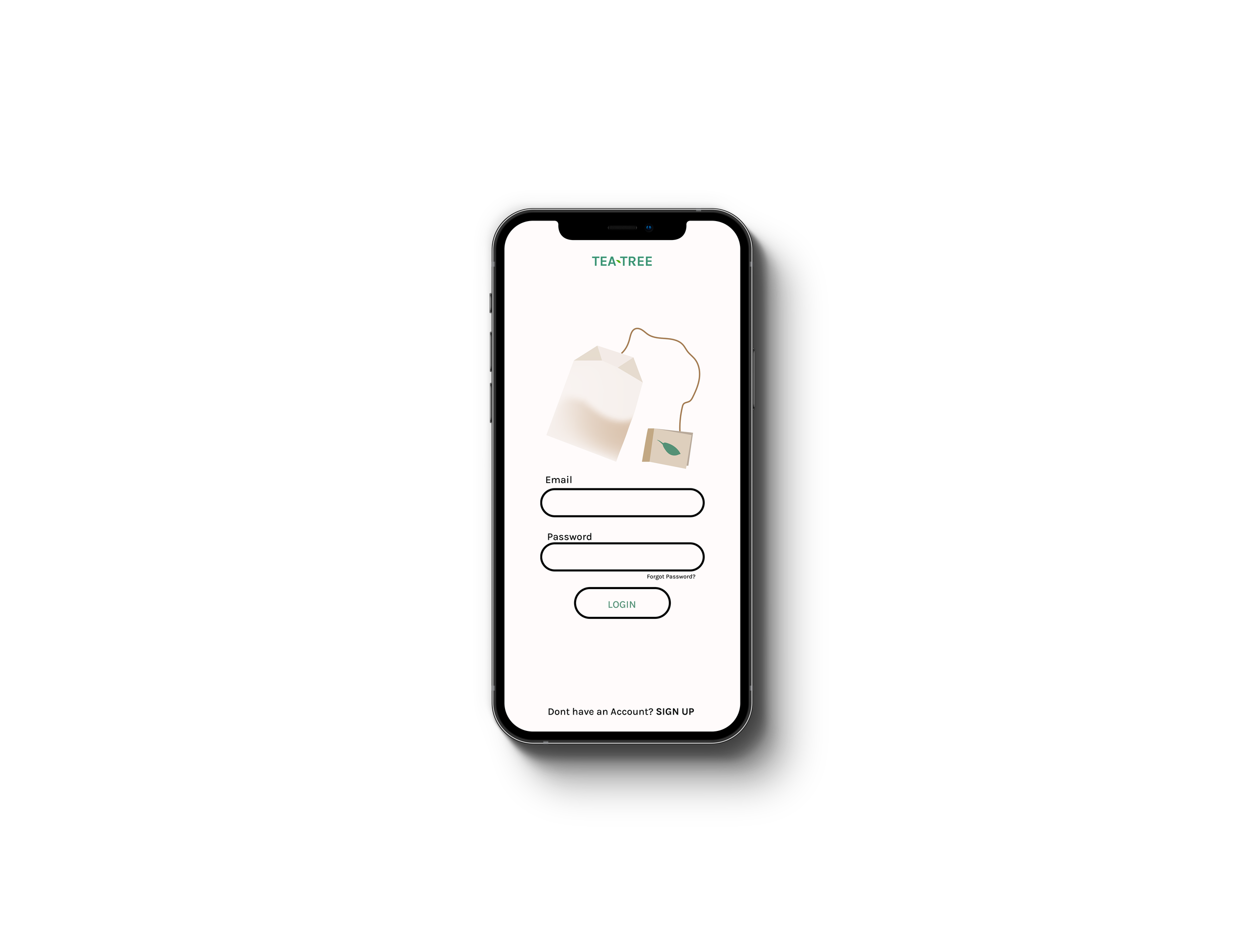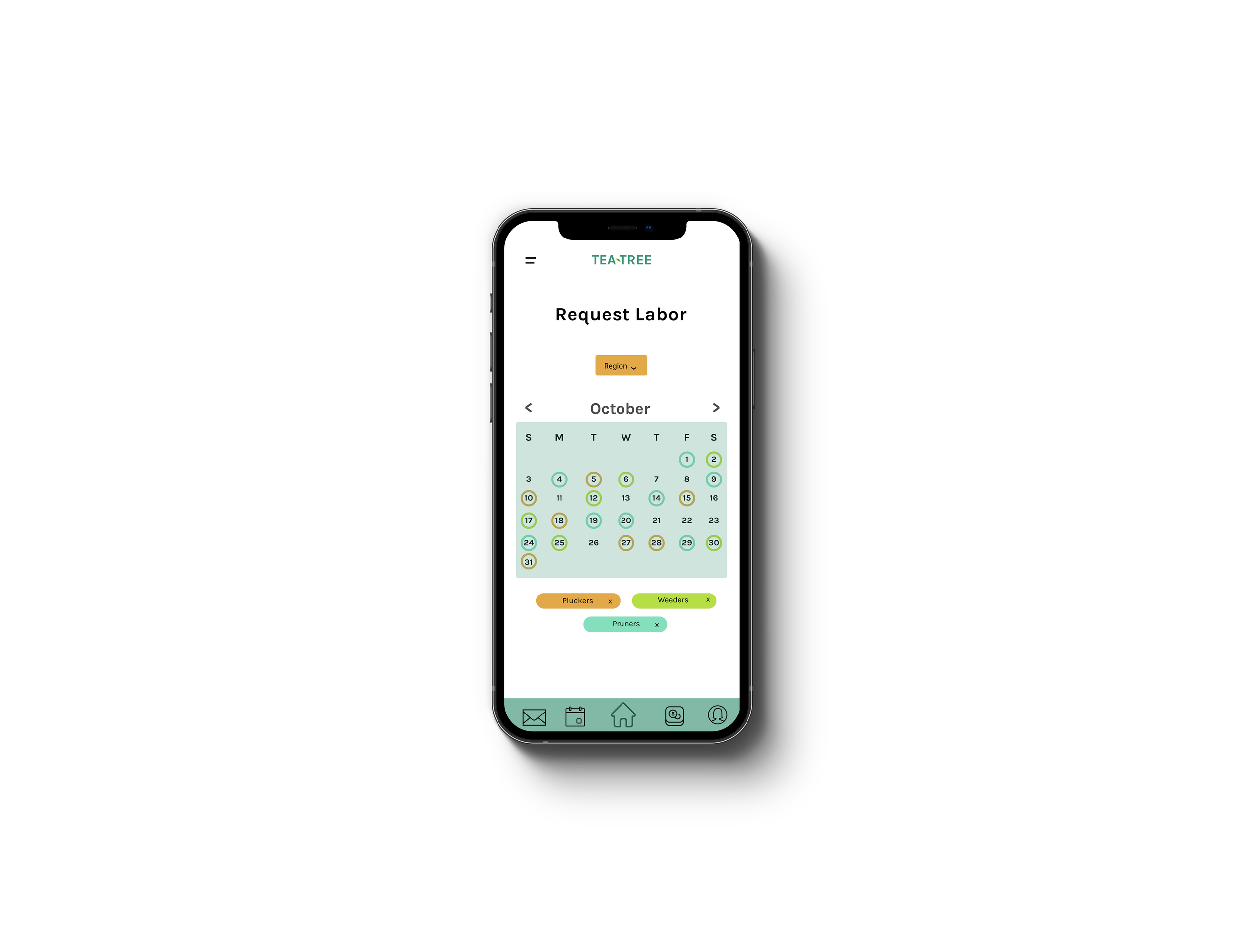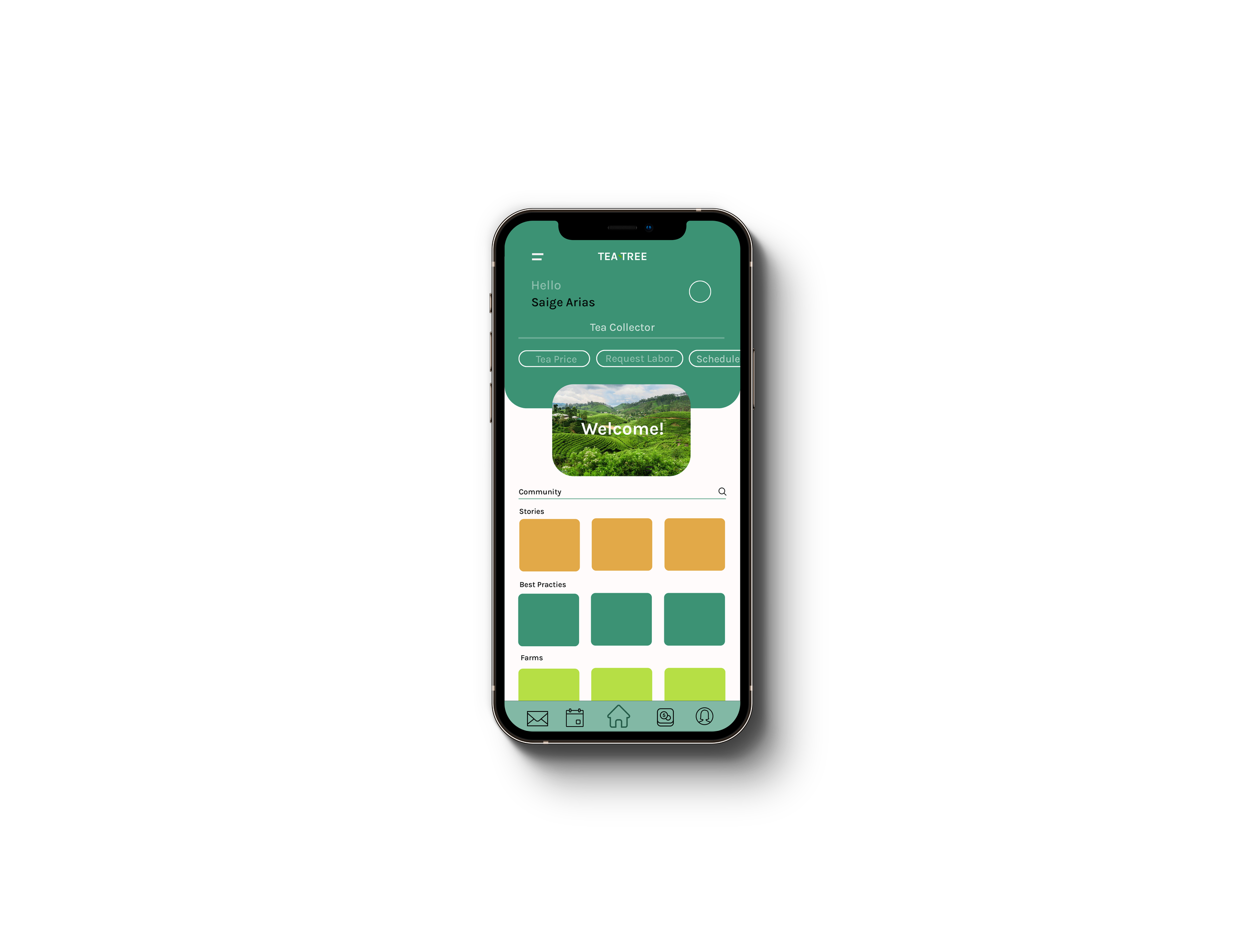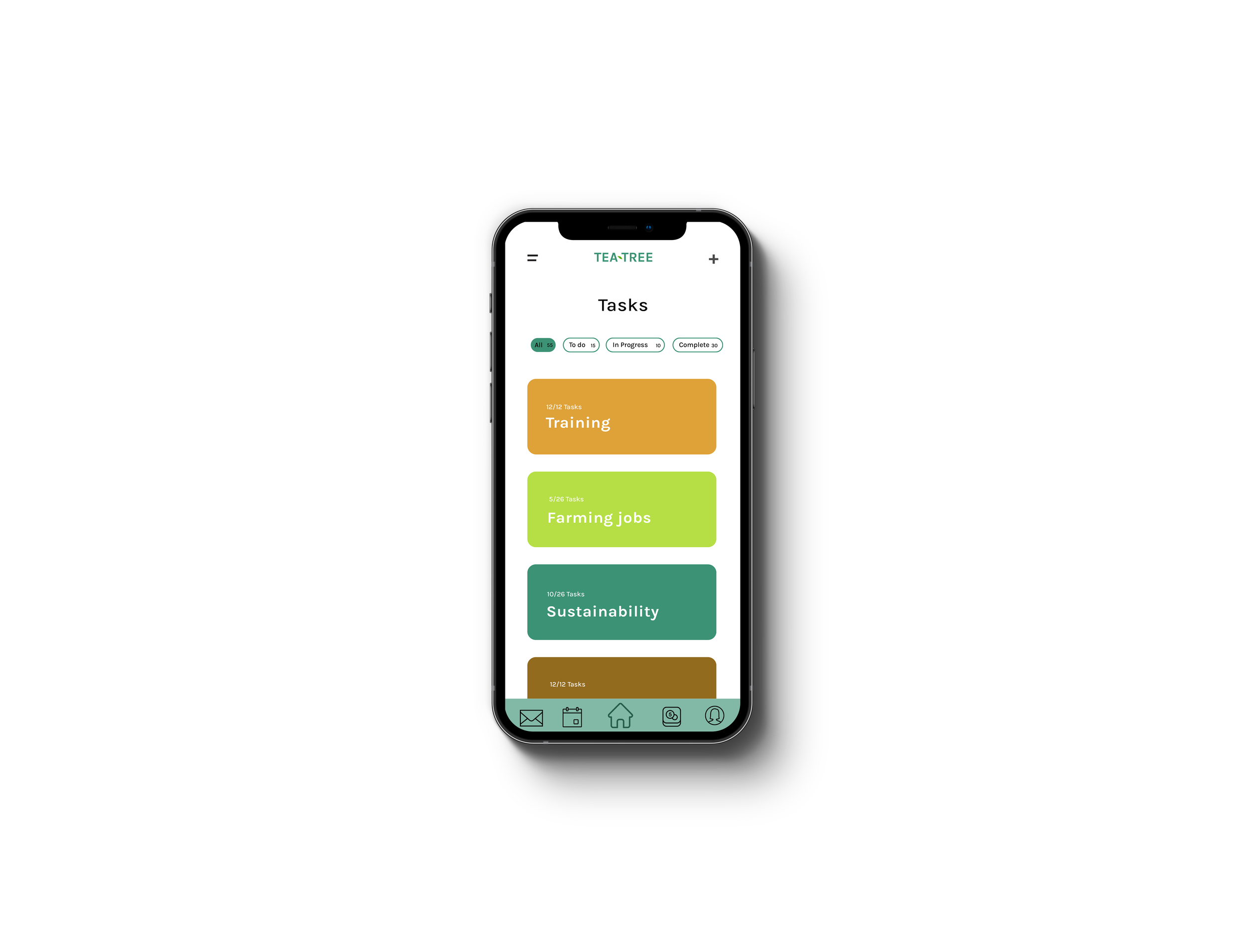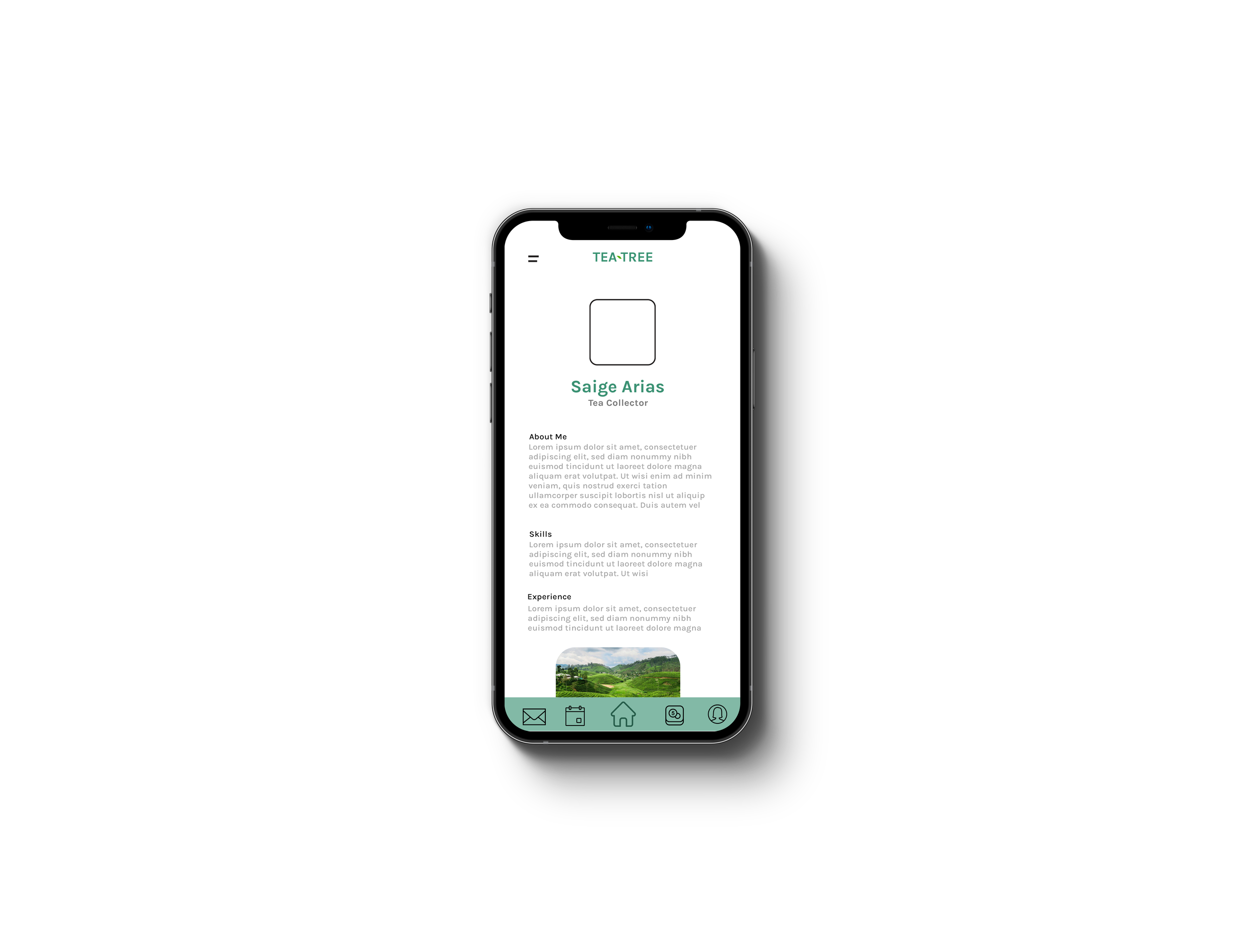
Timeline
My Role
October - November 2021
Student project for Communication Design II Course at the University of Vermont
PROBLEMThe Sri Lankan tea industry faces several hardships due to its social-ecological systems
The Sri Lankan tea sector is in trouble due to low productivty, low replanting rates, inadequate farming techniques, shortage of labor, and a lack of trained workforce.
SOLUTION Access to Information is essential
Enrich the Labor Pool
Easily apply for work in different regions
Schedule tea collection/deliveries
Follow-up training and best practices
Creates community within the tea industry
Training and Expectations
Water conservation
Integrated crop management
Soil management and conservation
Waste management
Sustainable practices
Efficient planting techniques
Training and Expectations
Water conservation
Integrated crop management
Soil management and conservation
Waste management
Sustainable practices
Efficient planting techniques
RESEARCHCommunication is one of the most important components of management a company can implement
After reading journal articles on Sir Lankan’s tea industry, tea sectors commonly lack adequate communication systems.
“Lack of information on tea production causes sub-optimal resource allocation or waste of resources in the tea industry.”
The Sri Lanka Tea Industry: Economic Issues and Government Policies In their study, Dulekha Kasturiante and Nigel Poole find that “better information/communication between exporter and importer increases relatioship quality, creating value in the relationship thereby increasing member performance.”
Creating Value for Competitive Advantage in Supply Chain Relationships: The Case of the Sri Lankan Tea IndustryCOMPETITIVE ANALYSISThe competing applications failed to include any social or communication aspects
While researching other agricultural/farming applications, I noticed that there was no avenue for interaction or communicating building. This inspired me to create an informational resource for those involved in the tea industry.
DESIGNDesign Insights
Since most Sir Lankans have smart phones but may not necessarily be tech-savvy, the idea was to make the application intuitive and informational. A tool that promotes productivity, opens job opportunities, and offers specialized training would be helpful to the tea sector.
Wireframes
FINAL PRODUCTFinal Screens
Style Guide
CONCLUSIONLessons Learned
This project in my Communication Design II course taught me how to develop a mobile app through the lens of UX design. We focused on strengthening brand identity, creating wireframes, and research related to our problem. I started by researching use interface design to decide which style my application would have. Next, I narrowed down a color scheme, typography, and icons. essentially the look and feel of the visual experience. This project highlighted the importance of researching competing application and designs. Exploring other sites helped me gain inspiration for my designs. After weeks of research and development, I was ready to transfer my sketches to Adobe Illustrator to create my navigational map. This process involved acquiring and integrating the product. Including aspects of branding, design, usability, and function was key. With feedback from my peers, I determined the main structure pages necessary for the sub-navigation and mockups. Overall, I learned the UX process and steps necessary to achieve the final product.


